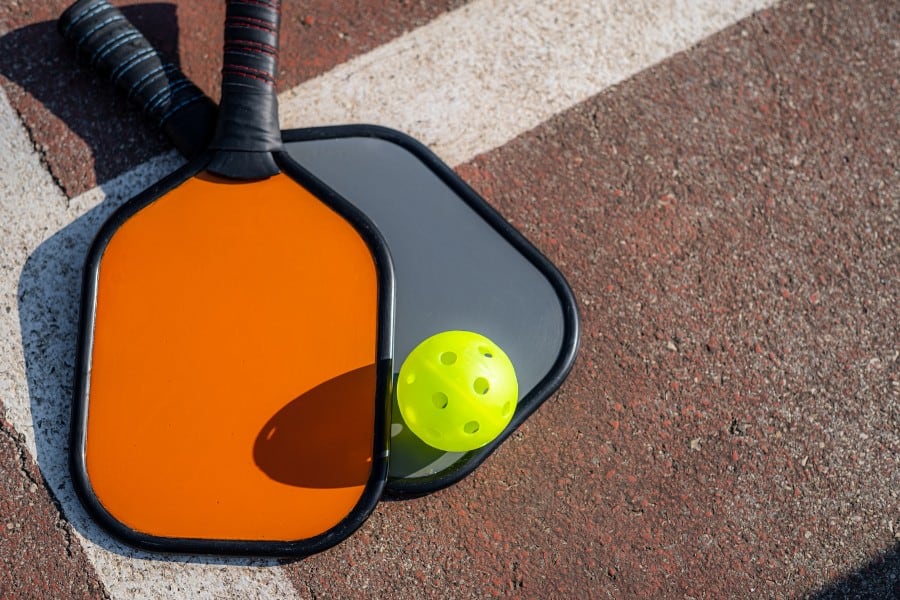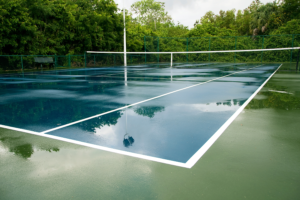
Pickleball is a sport that has been gaining popularity in recent years, and for good reason. It’s a fun and exciting game that can be played by people of all ages and skill levels. However, one thing that many people wonder about is why pickleball paddles are so expensive. In this article, we will explore the reasons behind the high cost of these paddles and whether or not they are worth the investment.
One reason why pickleball paddles can be expensive is because they are made using high-quality materials. Graphite, carbon fiber, and fiberglass are some of the most commonly used materials in pickleball paddles. These materials are lightweight, durable, and provide excellent performance on the court. Additionally, many manufacturers are constantly researching and experimenting with new materials and designs to create the best possible paddles for players.
Another reason why pickleball paddles can be expensive is because of the manufacturing process. Many high-end paddles are made in small batches, which can be labor-intensive and time-consuming. Additionally, advanced technology and design are often used in the manufacturing process, which can drive up the cost of production. However, these factors can also contribute to the high quality and performance of the paddles, making them worth the investment for serious players.
Factors Driving the Cost of Pickleball Paddles
Pickleball paddles can be quite expensive, with prices ranging from $20 to over $200. This section discusses the different factors that drive up the cost of pickleball paddles.
Materials and Construction
One of the main factors that contribute to the cost of pickleball paddles is the materials used in their construction. High-quality paddles are made of materials such as carbon fiber, graphite, and composite materials, which are more expensive than wood. These materials are lightweight, durable, and provide better performance.
The construction of the paddle also plays a role in its cost. High-end paddles are often made using advanced manufacturing techniques, such as molding, which requires expensive equipment and skilled labor. The design of the paddle can also affect its cost, with paddles that have unique shapes and features costing more than basic models.
Research and Development
Another factor that contributes to the cost of pickleball paddles is research and development. Paddle manufacturers invest a lot of time and money into developing new technologies and materials to improve the performance of their paddles. This research and development cost is passed on to the consumer in the form of higher prices.
Brand and Marketing
The brand and marketing of the paddle also contribute to its cost. Established brands with a reputation for quality, performance and aesthetics can charge a premium for their paddles. These brands also invest heavily in marketing and advertising to build brand awareness and attract customers. This cost is also passed on to the consumer in the form of higher prices.
In conclusion, the cost of pickleball paddles is driven by a variety of factors, including the materials used in their construction, research and development, and brand and marketing. While high-end paddles may be expensive, they often provide better performance and durability, making them a worthwhile investment for serious players.
Market Dynamics and Pricing
Supply and Demand
One of the main reasons for the high cost of pickleball paddles is the supply and demand dynamics of the market. With the increasing popularity of pickleball, the demand for paddles has gone up significantly. According to Picky Paddle, the market for pickleball paddles is expected to grow at a CAGR of 6.5% between 2021 and 2026. This means that manufacturers have to produce more paddles to meet the growing demand.
However, the supply of high-quality materials used to make the paddles is limited. For instance, carbon fiber and graphite are expensive materials used in making paddles. These materials are not readily available, and the production process is complex, which makes the cost of manufacturing high. As a result, the limited supply of high-quality materials has led to an increase in the cost of paddles.
Competitive Landscape
The competitive landscape of the pickleball paddle market also affects the pricing of the paddles. There are many manufacturers of pickleball paddles, and each one of them is competing for a share of the market. According to Thunder Pickleball, the competition in the market is intense, and manufacturers are always looking for ways to differentiate their products from those of their competitors.
To stand out from the competition, manufacturers invest heavily in research and development to come up with new technologies and materials that can improve the performance of their paddles. This results in higher manufacturing costs, which are passed on to the consumer in the form of higher prices.
In addition, manufacturers also spend a significant amount of money on marketing and advertising their products. This is because they need to create brand awareness and build brand loyalty to attract and retain customers in a highly competitive market. The cost of marketing and advertising is also passed on to the consumer, which contributes to the high cost of pickleball paddles.





